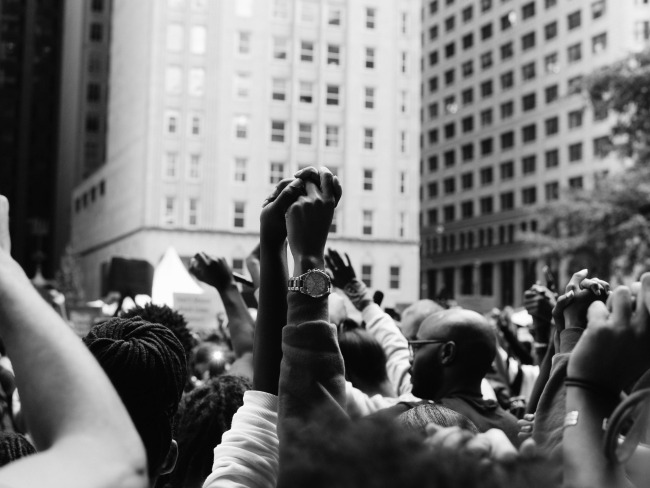Capitalizing on Mass Incarceration: U.S. Growth in Private Prisons
The introduction of profit incentives into the country’s incarceration buildup crosses a troubling line that puts financial gain above the public interest of safety and rehabilitation.
Related to: Incarceration
The War on Drugs and harsher sentencing policies, including mandatory minimum sentences, fueled a rapid expansion in the nation’s prison population beginning in the 1980s. The resulting burden on the public sector led to the modern emergence of for-profit private prisons in many states and at the federal level.
The United States has the world’s largest private prison population. Of the 1.5 million people in state and federal prisons in 2016, 8.5 percent, or 128,063, were incarcerated in private prisons.1 Another 26,249 people -73 percent of all people in immigration detention- were confined in privately-run facilities on a daily basis during fiscal year 2017.2
From 2000 to 2016 the number of people housed in private prisons increased five times faster than the total prison population. Over a similar timeframe, the proportion of people detained in private immigration facilities increased by 442 percent.
The federal government and 27 states utilized private prisons operated by for-profit and non-profit entities during 2016.1 New Mexico and Montana led the nation in their reliance on private prisons with 43 percent and 39 percent of their prison populations, respectively, housed within them (See Table 2 in document). Between 2000 and 2016, eight states – Arkansas, Kentucky, Maine, Michigan, Nevada, North Dakota, Utah and Wisconsin – eliminated their use of private prisons due to concerns about safety and cost cutting.4 In 2016, Louisiana changed the classification of its contracted beds and reported its private prison population as zero for the first time during this period. Alternatively, five states – Alabama, Connecticut, Pennsylvania, South Carolina and Vermont – began contracting with private prisons between 2000 and 2016.
The federal government is the single largest user of private prisons in the United States but has reduced its population in private prisons in recent years. However, in 2017 Attorney General Jeff Sessions withdrew an Obama-era directive to phase out private prison contracting because of concern for the federal correctional system’s ability “to meet future needs.”5
This report provides a portrait of private prisons as a component of the American corrections landscape and assesses its impact on mass incarceration. Among its most striking features is the broad variation found across jurisdictions in reliance on private prisons. As outlined in the state case studies examining the history of prison privatization in Florida, New Mexico, New York, North Carolina and Texas (available in the appendix), those corrections systems most committed to the industry have faced controversy, including riots, deaths, and allegations of improper financial influence from for-profit prison companies.
Political influence has been instrumental in determining the growth of for-profit private prisons and continues today in various ways. If overall prison populations continue the current trend of modest decline, the privatization debate will likely intensify as opportunities for the prison industry dry up and corrections companies seek profit in other areas of criminal justice services and immigration detention.
Key Findings:
- Of the total U.S. prison population, one in 12 people (128,063) was incarcerated in private prisons in 2016; an increase of 47 percent since 2000.
- 26,249 people were also confined in privately-run immigration detention facilities in fiscal year 2017; a 442 percent increase since 2002.
- Federal prisons incarcerated the largest number of people in private prisons, 34,159, marking a 120 percent increase since 2000.
- The largest private prison corporations, Core Civic and GEO Group, collectively manage over half of the private prison contracts in the United States with combined revenues of $3.5 billion as of 2015.
- Companies often trim prison budgets by employing mostly non-union and low-skilled workers at lower salaries and offer limited benefits compared to staff at publicly run institutions.
- Cost savings claims associated with prison privatization are unfounded according to decades of research.
| 1. | Carson, E.A. (2018). Prisoners in 2016. United States Department of Justice: Bureau of Justice Statistics. |
|---|---|
| 2. | Detention Watch Network & Center for Constitutional Rights. Data of average daily count obtained from Immigration and Custom Enforcement and Removal Operations division by Detention Watch Network and the Center for Constitutional Rights as part of a Freedom of Information Act lawsuit. Count excludes three privately run detention facilities for families and women. |
| 3. | Carson, E.A. (2018). Prisoners in 2016. United States Department of Justice: Bureau of Justice Statistics. |
| 4. | Louisiana is also newly included among states without private prisons but the change results from the state’s reclassification of these institutions as “local facilities.” |
| 5. | Sessions, J.B. (2017, February 21). Rescission of Memorandum on Use of Private Prisons. Office of the Attorney General. |



